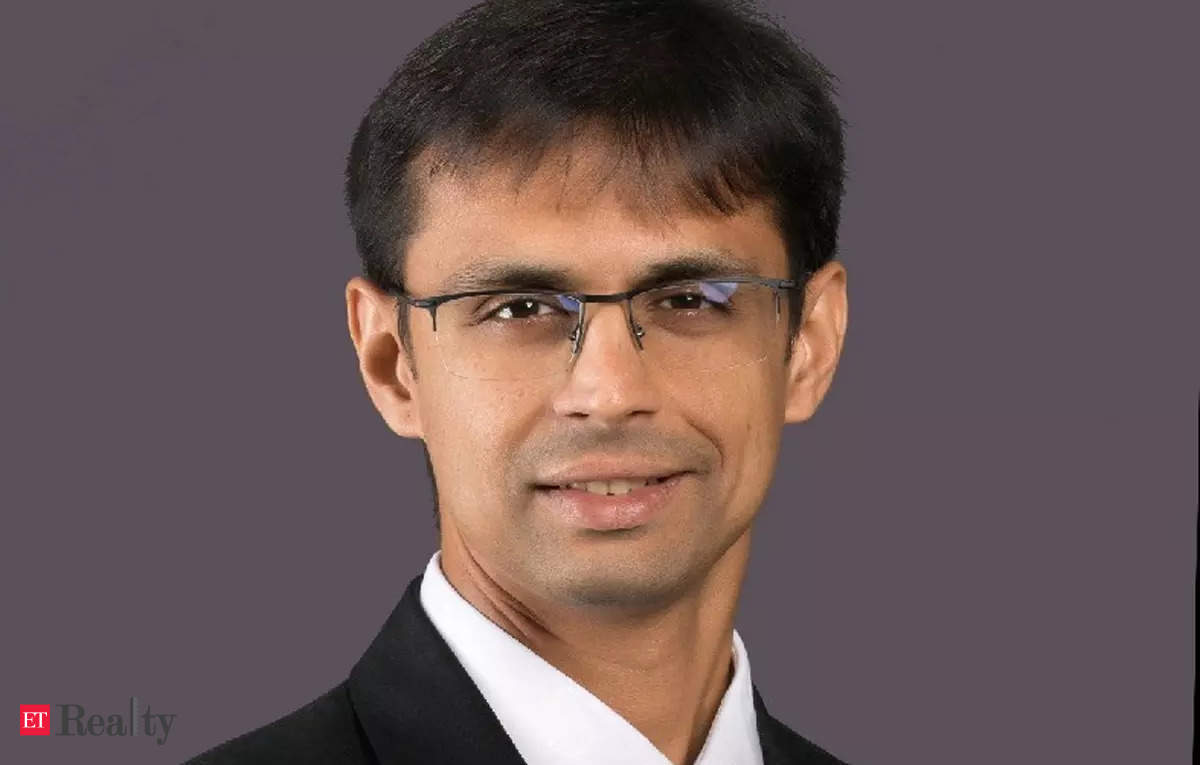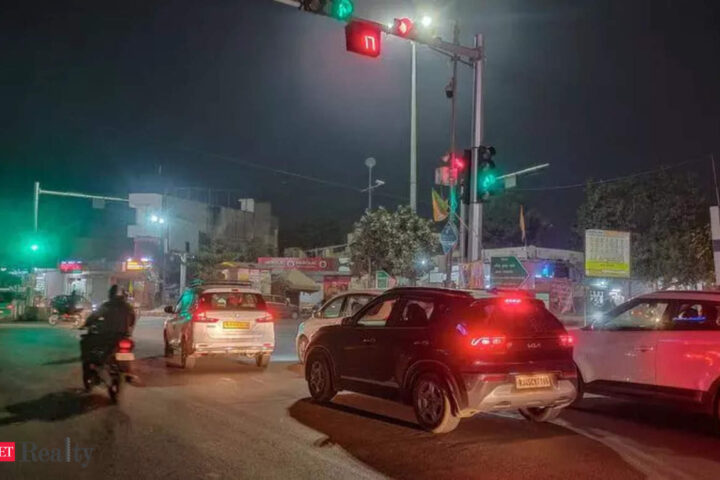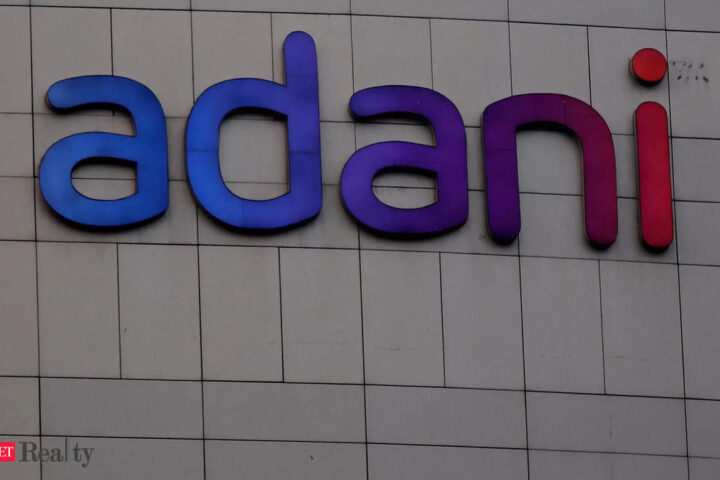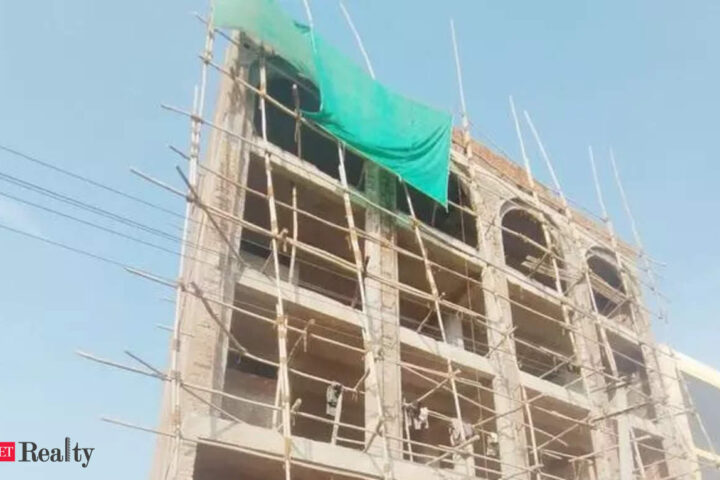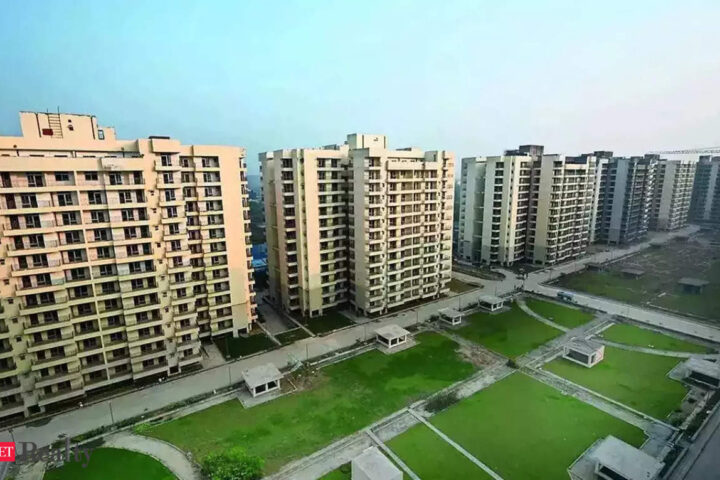
Aravind Maiya, CEO, Embassy REIT, says “for FY24, we have given a guidance where the NOI will be in excess of Rs 3,000 crore and from there it will grow. But in terms of cities, if you look at India and commercial real estate, there are broadly six cities – Bangalore, Pune, Mumbai, NCR plus Chennai and Hyderabad where we are not there yet. Chennai is one city where we definitely want to enter. Hyderabad, we believe, is a little bit skewed in terms of supply versus demand. We might look at it a little more carefully, but we will continue to grow in our core city which is Bangalore, plus look at some of the other cities within those five cities I spoke about.”
Real estate is doing very well. Where in the cycle are we? Interestingly commercial as well as residential both are doing well, especially the premium range and increasing awareness is rising that if you want to play the India bull run story or the India growth story, which appears more prolonged, commercial realty is a good angle to play. What are your thoughts on commercial real estate in India, the demand-supply, the factors at play on it?
Aravind Maiya: In terms of commercial real estate, as we speak now, we are in exciting times, after going through a bit of a lull because of Covid. Last calendar year was a bumper year in terms of gross leasing close to 60 million square feet of leasing across the core cities in India. For CY24, we are looking at potentially 65 million square feet of gross leasing as per some IPCs. Overall, a lot of these, strong RFPs are in the market, close to 20 million square feet and 50% of those RFPs are in Bangalore. Why I insist on Bangalore is because we at Embassy REIT are predominantly located in Bangalore. Close to 75% of our existing properties and upcoming properties are in Bangalore. We are in good, exciting times and a lot of demand is coming from growth in global capitals. We can speak about that in due course, but big picture, that is what is happening in the commercial real estate space.
As you said, you are right now predominantly in Bangalore, but you do have plans to foray into Chennai as well, at least that is what you articulated in your analyst meet. Plus, there is a pool of assets on which you have the ROFO rights or the right of first refusal. Are you looking at capitalising on that? What are your expansion plans?
Aravind Maiya: In terms of expansion plan, let me split it into two parts. One is what we call organic growth and second, the inorganic, which is where new cities come into picture. Just in terms of organic growth, there are good times ahead. Why I say that is we today are at 85% occupancy. Pre-Covid, we were at 95%. So, even if you were to consider 95% as stabilised occupancy, we have a good journey where the NOI and distributions can go up just from the existing space we have.
Plus, we are constructing close to 7 million square feet in our existing parks where the land is already paid for. So, we are looking at an excess of 20% NOI yields from these existing properties, so that is the second lever of organic growth. Outside of it, we anyway have the 15% once in three years contractual escalation. So, this is one part of the growth story, which is already there.
Then, of course, comes the inorganic growth. We really did not do much over the last two years because overall the sentiments were down, the stock was down and we as REITs distribute all the cash back to unit holders which means we always need to raise new capital if we need to grow inorganically. Of course, the price is corrected now so that is the reason why we are looking at growing inorganically and Chennai is, of course, a sponsor asset where we have ROFO rights. Outside of the ROFO assets, we continue to evaluate from third parties as well and that is the second bit of inorganic growth which we believe will start playing out for REITs in due course. Put together, organic plus inorganic, we should be looking at good net operating income growth as well as distribution growth in the years to come.
The Street is expecting net operating income to grow handsomely, maybe at the compounded annual rate of 12-13% and you might be looking at Rs 4,000 crore soon. Is that realistic and when you say inorganic growth, what size, which areas, which kind of geographies would you look at tapping?
Aravind Maiya: I will refrain from giving any future numbers. As we speak now, for FY24, we have given a guidance where the NOI will be in excess of Rs 3,000 crore and from there it will, grow. But in terms of cities, if you look at India and commercial real estate, there are broadly six cities – Bangalore, Pune, Mumbai, NCR plus Chennai and Hyderabad where we are not there yet. Chennai is one city where we definitely want to enter. Hyderabad, we believe, is a little bit skewed in terms of supply versus demand. So we might look at it a little more carefully, but we will continue to grow in our core city which is Bangalore, plus look at some of the other cities within those five cities I spoke about.
We can infer the kind of growth you would clock depending on the kind of guidance you have made. I want to understand what kind of conversations you are having with prospective clients? Who are your big clients now? When are you engaging in acquiring or building in new regions, you must be already in discussion with some of the clients to have better visibility on the kind of spending togo ahead with?
Aravind Maiya: I think this is a two-part question. In terms of clients, it is largely global capitals which are taking up space. When I speak about global capital, these are of different sizes. We have new entrants coming to India and taking up space as small as 15,000 to 30,000 square feet versus companies that have entered India many years back and have been growing phenomenally. They are looking at space in excess of 500,000 to a million square feet.
So, they are covering the whole spectrum of space. I think this is no longer a cost play for them. Core business functions are getting outsourced to India from global capitals largely because of, availability of STEM talent as well as other talent at scale in India because of which they are growing their presence. They are setting up transformation hubs in India. They are growing. So, this is the place from where we are getting all the demand.
In terms of moving to the second part of the question, it depends. There are few cases where we do build to suit, where even before we start construction, we have the tenant, we know exactly what we need, but more likely than not, we start a construction and during the course of construction, tenants come in and ask for space. And, then, of course comes the third stream where a building is already available and people look at existing space. So, it is a mix of all three. But as we speak, just referring to our third quarter, we did three large pre-leasing for three buildings under construction ranging from 6,50,000 to close to 8,50,000. These deals were not in the market for almost two years, but that is back now which is a very positive sign.
The bad news or the downside of a good phase in any sector is that the raw material also does not come that easy. What are your thoughts on that, be it refurbishments or actual land, because everything has gone up and the visibility is on the higher side, how are you negotiating this factor?
Aravind Maiya: I want to clearly clarify on REITs. REITs or Real Estate Investment Trusts are a more stable product for multiple reasons and one of the reasons is we cannot really buy vacant land. There are conditions under the SEBI REIT regulation which does not allow us for speculative transactions. 80% of our overall portfolio always needs to be completed and rent generating, which means we are not really in the market to buy land, whereas the various developers are in that game where they buy land, they construct and potentially in future they could offer it to the REIT for sale.
We are more looking at buildings which are complete or it could be larger parts where there is some bit of construction complete and some bit of future growth potential. So, these are the deals we look at. We are in a different market.
In terms of overall cost, over the last two years the costs have gone up but things have stabilised. It has fallen as well over the last few months. I would say cost has been pretty stable but the beauty of commercial real estate is we are inflation hedged. The rental prices are expected to move up largely in line with inflation or sometimes even higher, including the 5% which is contractually built in. So, it kind of takes care of the cost escalations which have happened or could happen in future, that is our take on this.
A quick word on the SEZ denotification. How are you looking at planning all of that because I do understand there is some GST angle to it as well. So, given all of this, what is the plan at Embassy REIT now?
Aravind Maiya: It is a very positive move, first of all, because being SEZ, a large part of space was not marketable. Now we are looking at it as non-SEZ. From our Embassy REIT point of view, we are in the process of demarcating, close to 1.8 million square feet of space. In terms of cost, the ballpark can range between Rs 350 and Rs 450 per square feet. But just converting the math, if we are looking at denotifying or demarcating a space in Bangalore where the rental is in excess of Rs 100, you could recover this cost in a matter of four months versus in some other city like Pune or Noida where we are in the specific micro markets and where we will recover those costs in seven to eight months.
So, overall, a very positive move from the government for which we are very thankful and that was one of the last headwinds which were there for this sector which has also gone away. So, it is a good move.


